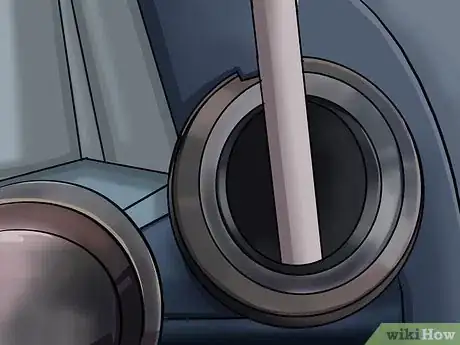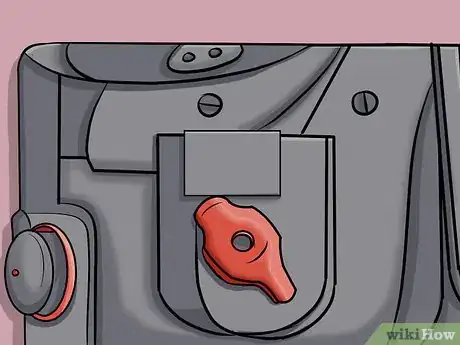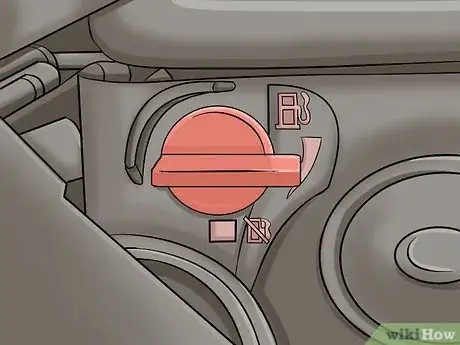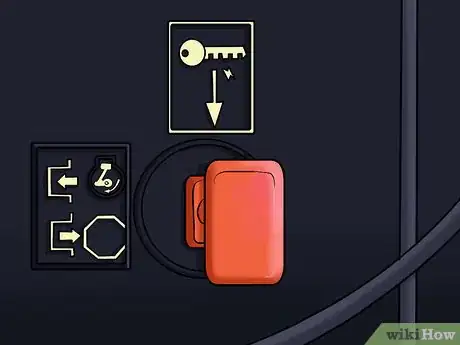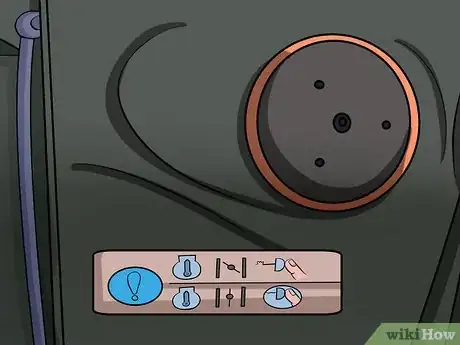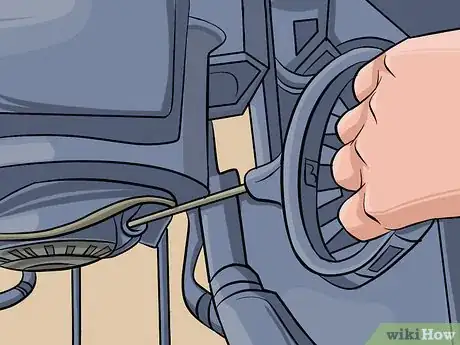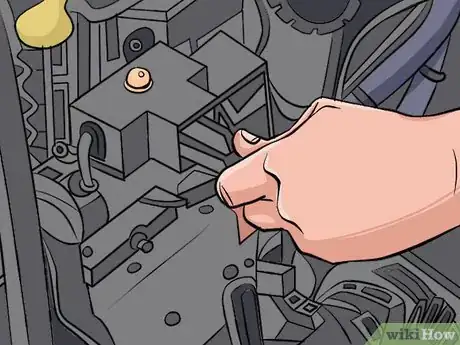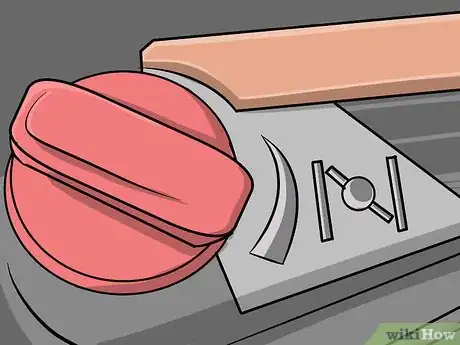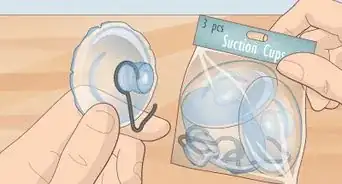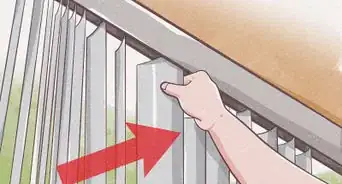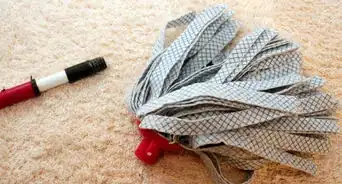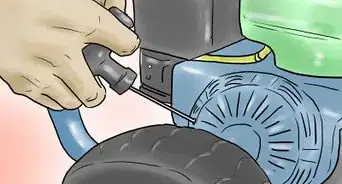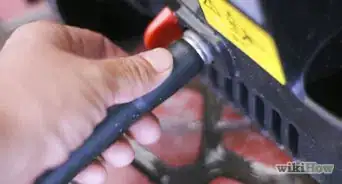This article was co-authored by wikiHow Staff. Our trained team of editors and researchers validate articles for accuracy and comprehensiveness. wikiHow's Content Management Team carefully monitors the work from our editorial staff to ensure that each article is backed by trusted research and meets our high quality standards.
This article has been viewed 90,630 times.
Learn more...
Starting a snowblower involves a few steps to inspect your machine and make sure it's in running condition. Then, prime your engine so it’s ready to ignite. Finally, use the starter rope or electric starter (depending on your model) to get your snowblower up and running.
Steps
Inspecting Your Snowblower
-
1Check the oil level. Before starting your snowblower, you’ll want to make sure that the oil level is at the “full” mark. If not, top off as needed, according to the manufacturer’s instructions.
-
2Fuel up. Your snowblower’s manufacturer will recommend a specific fuel type/grade. You’ll want to have plenty of fuel before you begin. Make sure it's fresh, especially if you haven't fired up your snowblower in a while.[1]
- Drain your gas if your snowblower has sat longer than a month with ethanol fuel in it. Ethanol fuel can deteriorate over time, and bad fuel can cause engine problems.[2]
Advertisement -
3Set the drive control to neutral. For safety reasons, you’ll want all drive controls set to “off” before starting your snowblower. Keeping your snowblower in neutral will prevent unintended activity once the machine starts.
Prepping for Ignition
-
1Set the choke to “full.” This is important for a cold start, so the fuel will mix properly with air and the engine will fire correctly. However, if you used your snowblower very recently (within five minutes), set the choke to the warm start setting, or about halfway.
-
2Increase the throttle. Turn it to the “fast” setting. Many models will identify this with a rabbit symbol. You should always start your snowblower on this setting.[3]
-
3Turn on the fuel. Your snowblower will have a fuel shutoff valve. To start using your snow blower, you will have to turn this to the “on” position. If you are unsure of the valve’s location, check the manual.[4]
- Always make sure to turn the fuel shutoff valve back to “off” when you are done with your snowblower. This will reduce the risk that fuel will leak.
-
4Hit the ignition switch. Usually, this control is a simple up/down switch, much like a light switch. Turn it to the “on” or “run” position.[5]
-
5Insert the key, if applicable. Some snow blowers include a key as a safety feature. These models won’t run unless the key is inserted.[6]
- If you need to quickly stop your snow blower while operating it, just remove the key.
-
6Push the primer bulb. This is a bubble-like switch that helps circulate fuel. Pushing it a few times should be enough. Try twice if the temperature is above 15 degrees Fahrenheit (-9 Celsius), or four times if the temperature is below this.[7]
- Don’t push the primer for a warm start (if you used the snowblower less than five minutes prior to starting again).
Starting the Engine
-
1Pull the starter rope, if your model has one. Grasp the starter rope by its handle. Pull slowly until you feel it “catch” some resistance. Then quickly and smoothly pull upward to start the engine.[8]
-
2Plug in the snowblower’s power cord if applicable. If your model has an electric starter, take the three-pronged cord and plug the other end into an outlet. The outlet must be the same voltage as your snow blower.[9]
- Read your model’s instruction manual if you are unsure of the voltage level.
-
3Press the start button, if your model has an electric start. Push the button in short cycles of only five seconds until the engine fires and stays running. Overtaxing the starter can damage it.
- Disconnect from the power source once your snowblower is running.
-
4Turn the choke switch off when you're ready to use the snowblower. Let your snowblower run for a few minutes to warm up. Then, turn the choke to the “off” or “run” setting. Your snowblower is now ready to use.[10]
References
- ↑ http://www.snowblowersatjacks.com/starting-your-snow-blower-the-ultimate-cheat-sheet.aspx
- ↑ http://michiganradio.org/post/you-start-snow-blower-read
- ↑ http://www.snowblowersatjacks.com/starting-your-snow-blower-the-ultimate-cheat-sheet.aspx
- ↑ http://www.snowblowersatjacks.com/starting-your-snow-blower-the-ultimate-cheat-sheet.aspx
- ↑ http://www.snowblowersatjacks.com/starting-your-snow-blower-the-ultimate-cheat-sheet.aspx
- ↑ http://www.snowblowersatjacks.com/starting-your-snow-blower-the-ultimate-cheat-sheet.aspx
- ↑ https://www.toro.com/en/customer-support/help-center-snow
- ↑ http://www.snowblowersatjacks.com/starting-your-snow-blower-the-ultimate-cheat-sheet.aspx
- ↑ http://www.snowblowersatjacks.com/starting-your-snow-blower-the-ultimate-cheat-sheet.aspx
About This Article
To start a snowblower, set the choke to “full” and increase the throttle to the “fast” setting. Next, turn the fuel shutoff valve to the "on" position and hit the ignition switch, which typically looks like a light switch. If your snowblower has a key, insert it now. Then, push the primer bulb a few times to circulate the fuel. If your model has a starter rope, pull it to engage the engine. If your snowblower is electric, plug it in and press the "start" button. Finally, turn the choke to the “off” or “run” setting. For tips on inspecting your snowblower before using it, read on!
